 W
WArmy of the Congress Poland refers to the military forces of the Kingdom of Poland that existed in the period 1815–1831.
 W
WArmy of the Duchy of Warsaw refers to the military forces of the Duchy of Warsaw. The Army was significantly based on the Polish Legions; it numbered about 30,000 and was expanded during wartime to almost 100,000. It was composed of infantry with a strong cavalry force supported by artillery. The Napoleonic customs and traditions resulted in some social tensions, but are generally credited with helpful modernization and useful reforms.
 W
WThe Battle of Łódź took place from November 11 to December 6, 1914, near the city of Łódź in Poland. It was fought between the German Ninth Army and the Russian First, Second, and Fifth Armies, in harsh winter conditions.
 W
WThe Battle of Lubieszów, occurred on April 17, 1577, was the most important battle in the two-year Danzig Rebellion fought between the forces loyal to the newly-elected King Stefan Batory of the Polish-Lithuanian Commonwealth and the Commonwealth's richest city, Danzig (Gdańsk), following the city's refusal to accept the election of Batory as monarch of the Commonwealth which had taken place on December 15, 1575. The battle took place to the west of the town of Tczew (Dirschau), southeast of Gdansk on the left bank of the Vistula river, near Lubieszów Lake and the modern village of Lubiszewo Tczewskie. While it was not a decisive victory insofar as Gdansk itself was not taken and the war raged on, the city, having lost much of its wealthy citizenry, did finally to come to terms with the king at the end of the year.
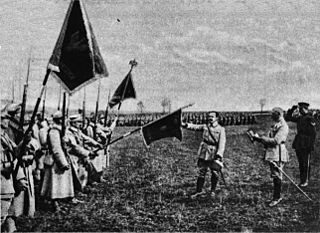 W
WThe Blue Army, or Haller's Army, was a Polish military contingent created in France during the latter stages of World War I. The name came from the French-issued blue military uniforms worn by the soldiers. The symbolic term used to describe the troops was subsequently adopted by General Józef Haller von Hallenburg himself to represent all newly organized Polish Legions fighting in western Europe.
 W
WThe Bosniak Corps was a Prussian Army unit of lancers of Bosniak origin. In 1745 they were organised in the 1st Hussar Regiment "von Ruesch".
 W
WBrest Fortress, formerly known as Brest-Litoŭsk Fortress, is a 19th-century fortress in Brest in present-day Belarus. In 1965 the title "Hero Fortress" was given to the fortress to commemorate the defence of the frontier stronghold during the first week of the German-Soviet War of 1941-1945 when Axis forces invaded the Soviet Union with the launch of Operation Barbarossa on June 22, 1941. The title "Hero Fortress" corresponds to the title "Hero City" that the Presidium of the Supreme Soviet of the Soviet Union awarded to an eventual total of twelve Soviet cities.
 W
WGeneral Inspector of the Armed Forces was an office created in the Second Polish Republic in 1926, after the May Coup.
 W
WKompania Zamkowa was the military unit the size of an infantry company, responsible for providing protection for the President of the Republic of Poland from 1926 to 1939. They also had a ceremonial function.
 W
WKosynierzy is the term for soldiers armed with war scythes. First appearing in the Kościuszko Insurrection of 1794, kosynierzy quickly became one of the symbols of the struggle for Polish independence.
 W
WThe military of the Polish–Lithuanian Commonwealth consisted of two administratively separate armies of the Kingdom of Poland and the Grand Duchy of Lithuania following the 1569 Union of Lublin, which joined to form the bi-conderate elective monarchy of the Polish–Lithuanian Commonwealth. The Polish army was commanded by the Hetmans of the Polish–Lithuanian Commonwealth, commanding the armies of their respective country. The most unique formation of both armies was the heavy cavalry in the form of the Polish-Lithuanian winged hussars. The Polish–Lithuanian Commonwealth Navy never played a major role in the military structure, and ceased to exist in the mid-17th century.
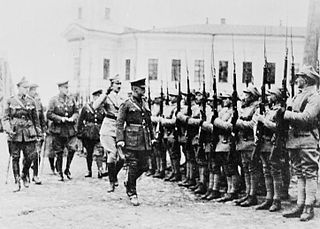 W
WMurmańczycy was a common name for Polish military formations which fought against the Bolsheviks in the area of Murmansk and Arkhangelsk, northern Russia, in 1918–1919. They were part of the Allied intervention in the Russian Civil War.
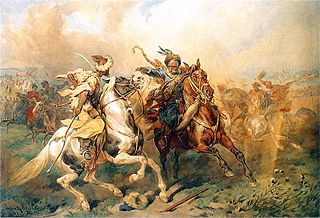 W
WObrona potoczna, variously translated into English as "Permanent Defense", "General Defense", or "Current Defense" was a hired military force in the 15th- and 16th-century Kingdom of Poland and the Polish–Lithuanian union, charged with defending the country's southern borders against incursions by the Tatars as well as occasional raids by Moldovans, Turks and Wallachians.
 W
WThe occupation of Poland by Nazi Germany and the Soviet Union during World War II (1939–1945) began with the German-Soviet invasion of Poland in September 1939, and it was formally concluded with the defeat of Germany by the Allies in May 1945. Throughout the entire course of the occupation, the territory of Poland was divided between Nazi Germany and the Soviet Union (USSR) both of which intended to eradicate Poland's culture and subjugate its people. In the summer-autumn of 1941, the lands which were annexed by the Soviets were overrun by Germany in the course of the initially successful German attack on the USSR. After a few years of fighting, the Red Army drove the German forces out of the USSR and crossed into Poland from the rest of Central and Eastern Europe.
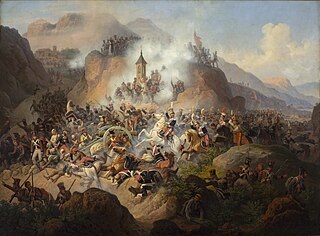 W
WThe 1st Polish Light Cavalry Regiment of the Imperial Guard was a formation of Polish light cavalry that served Emperor Napoleon during the Napoleonic Wars.There was an Old Guard Régiment de Chasseurs à Cheval from 1804; the Company of Mamelukes first raised in Egypt in 1799, also attached to the Old Guard, similar to the First (1807) and Second (1810) Régiments de Chevaux-lanciers, known respectively as the Polish Blue and Dutch Red Lancers of the Guard; and three regiments of Eclaireurs raised in 1814, four more Gardes d'Honneur and the Légion de Gendarmerie d'Elite, going back to 1804.
 W
WPolish Armed Forces were the armed forces of the Second Polish Republic from 1919 until the demise of independent Poland at the onset of Second World War in September 1939.
 W
WOn March 17, 2003, then Polish President Aleksander Kwaśniewski announced that Poland would send about 2,000 troops to the Persian Gulf to take part in the 2003 invasion of Iraq. Polish soldiers had been present in the region since July 2002 and combat was first confirmed on March 24. These formed the fourth of the larger military contributions to the forces arrayed against Iraq.
 W
WThe Polish Military Organisation, PMO was a secret military organization which formed during World War I (1914-1918). Józef Piłsudski founded the group in August 1914; it adopted the name POW in November 1914. It aimed to gather intelligence and to sabotage the enemies of the Polish people. Piłsudski used the POW to act independently from his cautious Austro-Hungarian supporters, and it became an important, if somewhat lesser known, counterpart to the Polish Legions. Its targets included the Russian Empire in the early phase of the war, and the German Empire later. Its membership rose from a few hundred in 1914 to over 30,000 in 1918.
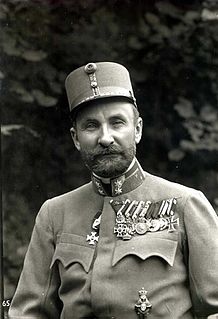 W
WRoyal Polish Army contemptuously nicknamed die Polnische Wehrmacht by Imperial Germany was a military formation created during World War I in direct response to Piłsudski's refusal to swear an oath of allegiance to Germany. It was intended as the armed forces of a puppet Kingdom of Poland envisioned by the Prussian Mitteleuropa Plan. The results of the recruiting campaign were dismal. The Polska Siła Zbrojna was nevertheless established, as part of the German Army and under complete German command. The commander-in-chief of the Polska Siła Zbrojna became general-governor Hans Hartwig von Beseler, while the de facto commander was General der Infanterie Felix von Barth, head of the training branch.
 W
WThe Polish People's Army constituted the second formation of the Polish Armed Forces in the East in 1943–1945, and in 1945–1989 the armed forces of the Polish communist state, ruled by the Polish Workers' Party and then the Polish United Workers' Party. The communist-led Polish armed forces, allowed and facilitated by Joseph Stalin, were the result of efforts made in the early 1940s in the Soviet Union by Wanda Wasilewska and Zygmunt Berling.
 W
WPuławy Legion was a Polish military formation of World War I, as part of the Imperial Russian Army.
 W
WThe Siege of Marienburg was an unsuccessful two-month siege of the castle in Marienburg (Malbork), the capital of the monastic state of the Teutonic Knights. The joint Polish and Lithuanian forces, under command of King Władysław II Jagiełło and Grand Duke Vytautas, besieged the castle between 26 July and 19 September 1410 in a bid of complete conquest of Prussia after the great victory in the Battle of Grunwald (Tannenberg). However, the castle withstood the siege and the Knights conceded only to minor territorial losses in the Peace of Thorn (1411). Marienburg defender Heinrich von Plauen is credited as the savior of the Knights from complete annihilation.
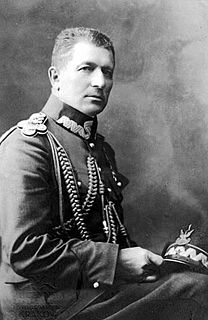 W
WThe strike of the generals was a joint resignation of a group of officers of the Polish Army in October 1924.
 W
WTemporary Advisory and Scientific Committee was established in 1933 under the patronage of the Ministry of Military Affairs in Poland. It was one of the first attempts in pre-Second World War Poland to institutionalise the army’s cooperation with the scientific community in order to increase the country's military and economic potential. The following eminent scientists participated in the work of the TKDN: Janusz Groszkowski, Maksymilian Huber, Stanisław Pawłowski, Mieczysław Pożaryski, Antoni Roman, Bohdan Stefanowski, Wojciech Świętosławski, Czesław Witoszyński, Mieczysław Wolfke and in 1936 Kazimierz Smoleński. The liaison officers of the Ministry of Military Affairs included: Col. Zagrodzki, MD, Col. Stanisław Witkowski, Dipl.Eng,, and Lt. Col. Leopold Gebel,.
 W
WThe Volontaires de Saxe were a military unit of cavalry troops recruited by French field marshal Maurice de Saxe. It consisted of dragoons and uhlans (lancers). The troops were organised and dressed according to the taste and ideas of the field marshal. A troops of lancers, composed of black men, guarded the Château de Chambord, his residence.
 W
WThe Volunteer Army was a military formation of the Polish Army, created at the height of the Polish–Soviet War. It was formed by the Council of National Defense on July 1, 1920. Composed entirely of volunteers, the formation did not enter combat as a single entity. Instead, its regiments were attached to other armies or used to replenish the manpower of battle-weary divisions. The army was commanded by Gen. Józef Haller.
 W
WWarfare in Medieval Poland covers the military history of Poland during the Piast and Jagiellon dynasties.
 W
WThe Wojskowy Instytut Geograficzny (WIG) was the Polish Military Geographical Institute from 1919 until 1949. Colonel Józef Kreutzinger was the Head of the Institute from 1926.
 W
WWhile Poland did not exist as an independent state during World War I, its geographical position between the fighting powers meant that much fighting and terrific human and material losses occurred on the Polish lands between 1914 and 1918.
 W
WThe Battle of Los Yébenes was the clash of the Regiment of Polish Lancers of the Legion of the Vistula with multiple regiments of Spanish cavalry, near the Spanish village of Los Yébenes. The heavily outnumbered Polish regiment, led by Colonel Jan Konopka, was attacked by surprise and almost defeated by the larger Spanish force.